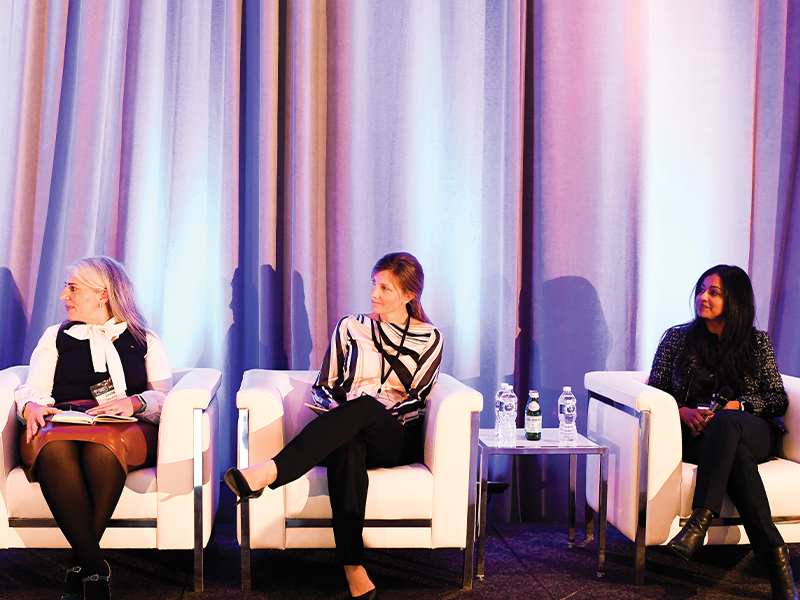

In the face of a tight labour market and fierce competition for top talent, employee mental-health and well-being supports are emerging as key components of employers’ attraction and retention strategies.
Speaking during a panel session at Benefits Canada‘s 2022 Healthy Outcomes Conference, Zayna Khayat (left), vice-president of growth and client success at Teladoc Health, said employee populations are broken down into three categories of mental well-being: about 25 per cent have a clinical, diagnosable mental-health condition; 35 per cent don’t have a clinical condition, but experience stress at home that leads to symptoms such as insomnia, substance use and appetite changes; and 40 per cent are either considered very healthy or healthy, but are at-risk of experiencing subclinical issues.
Any attraction and retention strategy needs to address all three groups and the way employees can flow between categories, she said. “From the recruitment side of things, it’s just table stakes that mental-health benefits are going to be expected. But it can’t be an arms race of, here’s 35 things you have, go to a website and go figure them out. That is not going to work and that will not differentiate.”
Read: Majority of employers enhancing total rewards to improve attraction, retention efforts: survey
During the pandemic, York Region worked with a mental-health consultant with a trauma-informed approach to develop a leadership commitment to workforce resilience. According to Brittany Dunlop (centre), the organization’s manager of wellness and benefits, the commitment includes plans to address working conditions and offering support where and when employees need it. As well, York Region improved its employee assistance program; boosted its annual mental-health coverage, from $1,000 per employee annually to $2,000 and up to $4,000 for paramedics; and expanded its scope of mental-health providers. Part of the strategy is undoing some of the harm of the pandemic on employees’ mental health, she said, and shifting its culture away from the 24-7 connectivity that became so common during the past two years.
Thomson Reuters Corp. heard repeatedly from employees that they’re now looking for more flexibility and support and to “fit work into life, rather than life into work,” said Pragashini Fox (right), the organization’s head of human resources product and head of talent and diversity.
In response, it rolled out a work-life balance package that includes working from anywhere for eight weeks, 10 paid days off for caregivers, paid bereavement leave and unlimited vacation. “I’m not saying we have all the answers, but I think, for us, in terms of hiring and retention and making sure we’re doing right by our colleagues, we wanted to make sure this was [at the] forefront.”
Read: Thomson Reuters supporting employee well-being with new vacation policy
The panellists also highlighted the importance of targeted support for people leaders as part of a recruitment and retention strategy, given their elevated levels of burnout due to the challenges of managing employees in a hybrid work environment.
“Our managers have repeatedly said, ‘How are you training me? What tools and tips are you providing for me to be able to lead a team?” said Fox, noting Thomson Reuters is testing out intentionally blocking time in managers’ calendars to give them the time for webinar training sessions.
York Region provides mandatory mental-health training for leaders, including modules on self-care and resilience and an optional resilience coaching program. “We know our management is feeling burnt out and one-off training isn’t cutting it,” said Dunlop. “We’re really trying to create moments for people to engage.”
Going forward, a supportive and sustainable culture is going to be a key part of employers’ value proposition to new and existing employees, she said. “What does it feel like to work here is going to be really important . . . and empathetic leadership as a core competency is something we need to be hiring for to ensure we have a strong workforce.”
Read more coverage of the 2022 Healthy Outcomes Conference.
